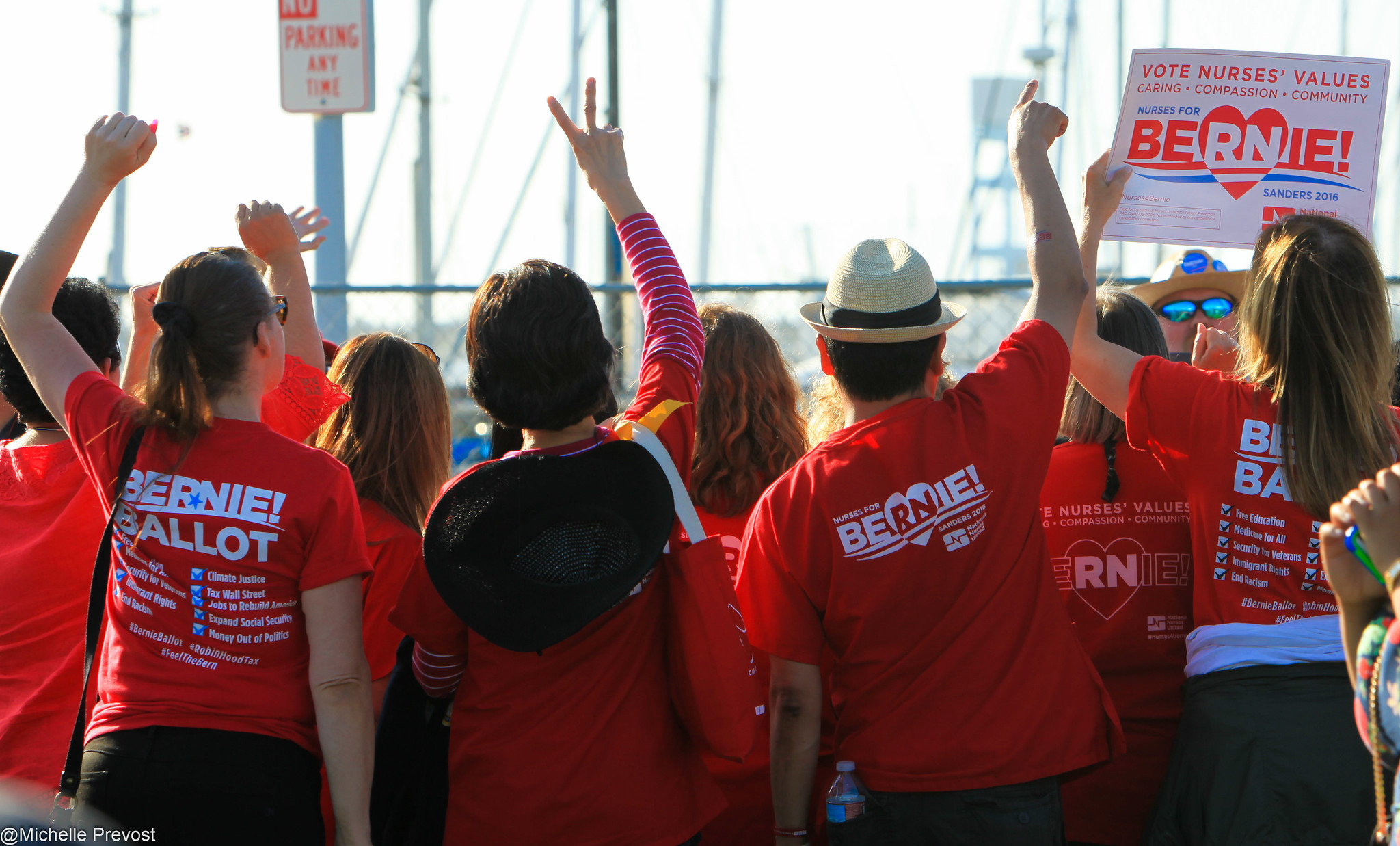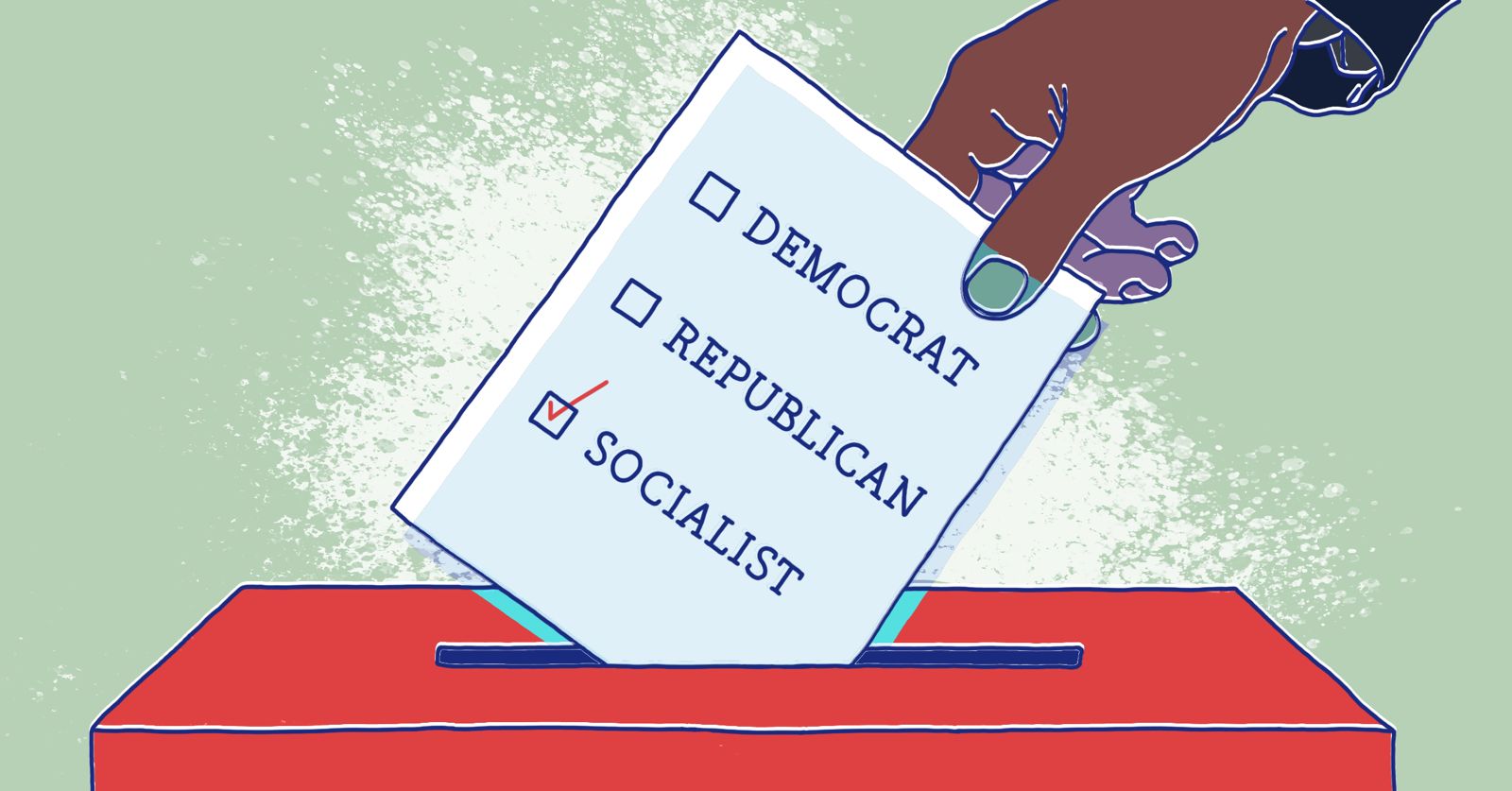Bernie Sanders’s somewhat sudden and unexpected drop from the presidential race left many leftists scrambling for answers about what went wrong and where to go next. Bernie’s 2016 and 2020 campaigns acted as training wheels for the post-Occupy Left and, more specifically, for DSA. The campaigns popularized the idea of socialism, and they directed Left energy — giving leftists a sense of pushing in the same direction by uniting what can be disparate struggles and demands under a single umbrella.
Now that the campaign is over, socialists are feeling the vacuum. In a recent article, “Facing Reality: The Socialist Left, the Sanders Campaign, and Our Future,” Charlie Post and Ashley Smith attempt a debrief of Bernie’s defeat and what it means for socialists. They argue that the Democratic Party is a sure dead-end for socialists trying to build independent political power and that socialists should build a party of our own.
On this much, we agree. The Democratic Party doesn’t represent the interests of the working class, and any attempts to reform it into a party that does have been and will be futile; we need a working-class party. However, Post and Smith’s conclusion that any electoral work involving candidates running on the Democratic Party ballot line is a waste of time for DSA relies on a flawed conflation of the Bernie campaign itself with DSA’s independent efforts to use the campaign to popularize socialism and build the organization, in addition to campaigning for Bernie.
Contrary to what Post and Smith posit, DSA and its members were not simply “involved” in Bernie Sanders’s campaign for president. DSA built its own independent campaign with an explicitly socialist framing and the goal of recruiting new members. While some chapters chose to coordinate directly with the Sanders campaign, close to 150 DSA chapters organized their own DSA for Bernie campaigns with DSA-specific literature, signs, t-shirts, talking points, and goals. Many of us in DSA saw the 2020 campaign as an opportunity to deepen the gains we made in 2016 and 2017 when Sanders’s campaign brought about the organization’s rebirth thanks to Bernie’s use of the term “democratic socialism.”
Certainly the question of whether the DSA for Bernie campaign took too many cues from the official campaign remains open and outside the scope of this writing. But it’s simply untrue to say that DSA made no independent organizational gains through DSA for Bernie. The Bernie work got new and existing members plugged back in to DSA, and in just the first few weeks since Bernie dropped out, almost 5,000 people have joined the organization.
Clearly these are not numbers that win a presidential election for a democratic socialist candidate. Still, these people are hungry for real leftist politics and want to belong to an organization. The DSA for Bernie campaign allowed DSA chapters to activate these new socialists and then plug them into the ongoing work of the organization. DSA members also helped organize Labor for Bernie efforts across the country, which supported rank-and-file union members to push for their local and national unions to endorse Bernie. Where this was successful, and even where it was not, it helped build the confidence, relationships, and organizing know-how of union workers independent of the corporate Democratic establishment and the union leaders that defer to it.
Yes, Bernie’s campaign was exceptional, as Post and Smith claim, but DSA isn’t hanging its entire strategy on exceptional events. We’re learning how to use them to advance a long-term socialist project. It’s DSA’s responsibility to fashion itself into a mass organization rooted in the working class and to develop projects that can move its members, and the working class more broadly, into struggle against capital. Electoral work is just one way to do that.
So, after the end of the Bernie era, how do we chart a class-struggle electoral strategy for DSA?
Using the Ballot Line
Post and Smith argue that socialists shouldn’t give even a “pound of flesh” to the Democrats, abstaining even from running DSA candidates on the Democratic Party ballot line. They make the case that the “dirty break” — a strategy of running socialist candidates on the Democratic ballot line in the short term with the long-term goal of breaking away and forming a new party — is futile. They characterize the election of democratic socialists who ran on the Democratic ballot line as accidents of chance against which the Democratic Party is now more prepared to fight back. According to Post and Smith, even tactical use of its ballot line will mire socialists in the trap of the Democratic Party.
How DSA relates to the Democratic Party remains a major point of contention within the organization. I’m pleased to see Post and Smith grappling with these questions, though I’m less pleased to see them extrapolate an “official” DSA position from a flawed article by Madison DSA member Andy Sernatinger and the individual opinion of Democratic Socialists for Medicare for All leader Dustin Guastella. As Emma Caterine has argued, Sernatinger bases his analysis on an overreading of social media posts and a failure to actually look at what DSA chapters did on the ground.
I can’t speak for the entirety of DSA — nor can Andy or Dustin — but I can elaborate on the position advocated by Bread & Roses.
For those of us who pushed DSA to adopt a class-struggle approach to elections, where the primary goals are building working-class organization and popularizing socialist ideas, running candidates on the Democratic Party ballot line remains a tactical choice. It makes sense in some contexts, like a presidential election, because it gives our candidates high visibility. In other contexts, such as California and Washington where nonpartisan blanket primaries are used, running candidates with no partisan affiliation might make more sense for class-struggle electoral aims. DSA hasn’t yet meaningfully explored this second avenue, and we should.
The point is that the implications of using the Democratic Party ballot line vary significantly between cities and states. Still, running on the Democratic line, especially as primary challengers, offers our candidates — and therefore our ideas and issues — more visibility than we’d get running on the Green Party line.
Bernie’s exit from the race certainly raises the stakes on the visibility front. Had he won, or even stayed in long enough to make it to the convention and put up a fight, the Left might have gained a longer window to sow discontent inside the Democratic Party. With Bernie in the White House — or even in the race through the convention — socialist ideas might have stayed in the mainstream longer, and socialists might have been able to ride Bernie’s coattails to Congress. At this point, though, this is all speculation.
What we know is that we no longer have the opportunity to use a self-described democratic socialist’s campaign for president as the training wheels for a still-nascent socialist movement. But we shouldn’t take this to mean that the left should shy from elections. We must now learn to build mass politics on our own.
Elections and Beyond
Post and Smith warn against the danger of allowing electoralism to detract from building this mass politics. While we have no illusions that we can win socialism simply by winning elections, they remain a key arena of political activity, and we should take advantage of the platform that even just campaigning lends to our politics. Even when we win elections, putting a socialist in office means little when there isn’t a working-class movement to back them up while they’re there. That’s why a key task for DSA is preparing members to take rank-and-file jobs, build unions, and transform them into democratic, fighting organizations that represent the interests of their members — what’s been called the rank-and-file strategy. We must also build strong relationships between DSA candidates and the labor movement both through the campaign process and while they’re in office.
A solid example is the work done by DSA and the six DSA-affiliated Chicago aldermen during the fall 2019 strike by the Chicago Teachers Union and the Service Employees International Union against the Chicago Public Schools. Throughout the 14-day strike, DSA organized support, both on the picket line and through a program called Bread for Ed, which prepared more than 10,000 meals for striking teachers and out-of-school students. The DSA aldermen, in turn, used their offices to distribute Bread for Ed meals. This joint effort was important not only because it fed thousands of children and teachers but also because it solidified the ties between DSA, the DSA aldermen, and the unions, contributing to a sense of a united working-class movement.
The Chicago context is a great case study for how we might continue to wage class-struggle elections and build a working-class base for a new party. DSA can run candidates — on the Democratic Party ballot line or not — and leverage our relationships with the city’s rank-and-file–led unions to back them. If we win, we have a bully pulpit from which to continue to name the enemy and organize people into our movement. If we don’t, we will have continued to forge relationships between socialists and unionists.
Given the varied political character of cities across the country, this doesn’t map one-to-one onto every context, but the principle applies. Concretely, this means that in order to carry out a successful class-struggle electoral strategy, DSA has two tasks: building a candidate pipeline to develop our own candidates and stepping up efforts on the rank-and-file strategy.
This second task is particularly important. As Hamilton Nolan recently put it in In These Times, we can only build a mass socialist movement by “giving millions of people the firsthand experience of class consciousness in their own lives.” This means that a class-struggle electoral strategy, in order to succeed, requires sustained political activity and organization between elections.
Of course, Bernie was never going to be a magic bullet. No one — including Bernie — ever claimed he would be. But the question now isn’t “Where did we go wrong?”, it’s “Where do we go next?”




